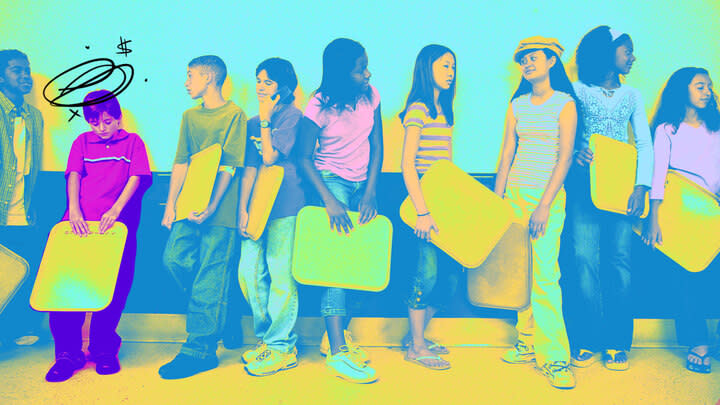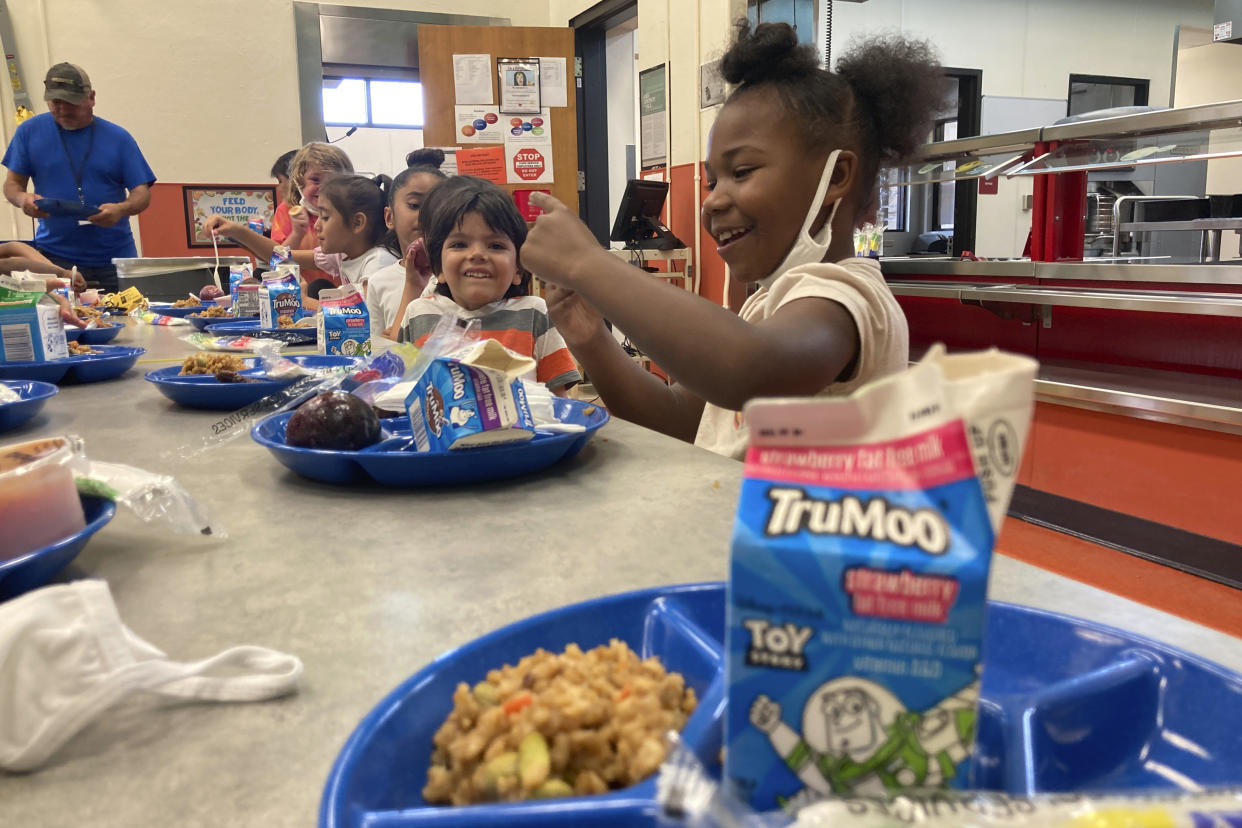Student lunch debt is a growing problem in American schools. Here's what activists propose to end the cycle of 'empty plates.'

During the pandemic, Gabe Segal, an eighth-grade special education teacher in Virginia, used his personal stimulus check to pay off over $600 of lunch debt at a local elementary school.
"It's a significant issue, and sometimes there are kids who won't eat because they know they're accumulating debt," he tells Yahoo. "It will keep getting worse if we don't do something about it."
This year, he and other activists raised over $40,000 for the cause — but say it was only a drop in the bucket and that the work is far from over.
We raised more than $2,500 tonight for Fairfax County students’ meal debt! Huge huge shoutout to @GabeSegal for the great work he is doing to make sure no student goes hungry. My heart is full seeing our community step up in such a big way 🙏 thank you 🩵 pic.twitter.com/ERp7Mgp7uv
— irene shin 🐰 (@ireneshintweets) August 18, 2023
Among others making it their mission to help through crowdsourcing is 14-year-old DeJuan Strickland in Missouri, who this year raised over $7,500 via GoFundMe for the cause, telling ABC News that "sometimes the only nutritious meal for kids is at school."
Last winter North Carolina moms Jean Foster and Emily Kiral raised over $30,000 to offset the numbers, telling Spectrum News that it's still not enough. "Kids are still in schools, they are continuing to eat, so we have about another $30,000 [to raise]," said Foster.
Elsewhere, churches and activists across virtually every state — including Virginia, Texas, Minnesota and Wisconsin — have hosted similar fundraisers in the last year.
"I want to make sure that no school is left holding the lunch bag, so to speak, for so many kids that haven't been able to pay their lunch debt," Adelle Settle, a Virginia mom who helped raise over $50,000 this year to pay off lunch debt at her local schools, told Good Morning America in June.
As Segal stresses, "No kid should have empty plates and growing debts."
What is school lunch debt?
Simply put, school lunch debt describes the tally of unpaid costs that families owe to school districts when their children receive school meals but don't have the money — $1.73 to $1.80 for breakfast and $2.75 to $3 for lunch, according to the School Nutrition Association (SNA) — to pay for them in real time.
Each school has its own way of handling lunch debt, Segal notes. Most have a lunch account to which parents can add money that gets deducted as each child buys their meals, while some families opt to pay cash. When kids don't have the money to pay, most protocols still allow them to eat, though the cost of their meal is added to their accruing debt, which many districts expect parents to pay off in full by the end of the school year.
Unpaid lunch debts have historically kept kids from graduating or retrieving transcripts for college applications. Some schools have demanded that kids work in cafeterias or barred them from prom until such debt is paid, which activists describe as a form of "lunch shaming" (when schools single out kids or publicly embarrass them for unpaid debt).
Families are punished as well. Segal says "numerous families" get buried with emails and texts from schools pressuring them to pay off their debts: "'Am I going to get fined? Is it going to increase?'" he notes of their compounding stress.
The issue of student lunch debt rose to new heights during the pandemic, prompting the U.S. Department of Agriculture (USDA), which funds lunch programs in American schools, to issue nationwide waivers to allow free meals for every public school student in the country regardless of household income. When the waivers expired in June 2022, President Biden signed the Keep Kids Fed Act to give an extension to all families until September 2022, after which school districts began charging again.
It worked, at least temporarily: From April 2020 to summer 2021, food insecurity for at-risk children declined by about 7%, according to the U.S. Census, with the vast majority of public schools (90%) opting in to the program — but that still wasn't enough.
Hi there! Just a quick update! We have committed funds or funds on hand to cover the full lunch debt at …. https://t.co/kPuU7Ufh1Cpic.twitter.com/gQ1RpmIYl5
— Settle the Debt (@Settle_the_Debt) June 13, 2023
Per the SNA, school districts had over $19 million of accumulated lunch debt at the end of 2022 — a median of $5,000-$6,000 per school district, with one Utah district accounting for $1.7 million alone. In the same survey, 96.3% of districts blamed the end of pandemic-era waivers for an increase in debt.
As noted by the USDA, a family of four needs to make $39,000 a year or less to be eligible for free meal programs. And while many families are over that threshold "on paper," Segal says food inflation (which in turn affects school menu prices) and rising rents limit them from having the allowance for lunch money.
Nine states have since passed legislation to bring back free school meals for all, beginning either this year or next, per the Food Research & Action Center. They are California, Colorado, Maine, Massachusetts, Michigan, Minnesota, New Mexico, Vermont and Nevada.
And Cindy Long, administrator of the USDA Food and Nutrition Service, says universal free lunches on the federal level are a long time coming. "Every parent should be able to know their kids are getting meals without a lot of red tape," she tells Yahoo Life.
Universal free lunch for all
Long says school districts are able to receive funding for free lunches based on a formula accounting for the number of kids at the school on SNAP as well as on other government programs for at-risk families.
That means if a school district owes thousands of dollars in lunch debt and has exhausted the federal funding given to it, it needs to find that money either from the state's budget or its own school budget. That may require opting out of buying equipment (like computers) or canceling activities like homecoming or prom — or even deducting from teacher salaries.

Illinois state Rep. Maurice West helped pass universal school meals for all K-12 students in his state. He describes it not as a "handout," but rather as "an investment in our future."
"We're providing free meals to our young people so we can break down any barrier, any hurdle we can control to ensure that they get the proper education they need," he tells Yahoo Life.
That's exactly why people like him and Segal are continuing to sound the alarm about the growing issue.
"It's not political to me; it's really common sense," Segal says. "This is free public education, and yet we're charging kids for textbooks and food."


